- Becoming a Massage Therapist
- Massage Therapy Schooling
- Online Programs
- Massage School Accreditation
- School Tuition
- State Boards of Massage
- Types of Massage
- Massage Therapist Duties
- Massage Therapist Salary
27 Types of Massage Therapy to Explore
A license in massage therapy opens the door to dozens of specialty therapies—discover the right one for you.
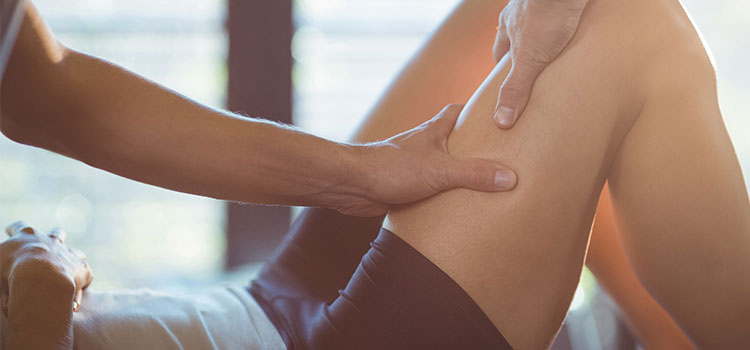
Since ancient times, massage therapy has been practiced in many different cultures and settings. The field of massage therapy continues to evolve today with a wide variety of techniques and approaches available to practitioners.
Basic massage therapy—the practice of applying structured or unstructured pressure, tension, motion, or vibration to the soft tissues of the body—is the foundation on which most types of massage specialties are built. Depending on the school and program you attend, you’ll likely be introduced to several different massage types.
Varying forms of the practice include neuromuscular massage, sports massage, Shiatsu, and others. State-licensed, trained massage therapists can find a wide range of job opportunities in health and wellness centers, hospitals, clinics and spas, and resorts, as well as private practice.
As you develop your career further and look to increase your earning potential, you could choose to specialize in a particular area of massage or bodywork. Typically, additional certifications and continuing education opportunities are available to build these skills.
Specializing can be one way to differentiate your services and appeal to a specific type of client. Some of the popular massage therapy specialties are detailed below—click on each to learn about the training you’ll need—but there are countless others to explore.
Massage Therapy Types & Techniques
Basic bodywork
Rather than focus on a particular part of the body, basic bodywork generally addresses the entire body and provides an experience that many typically associate with the idea of massage therapy.
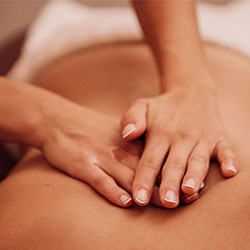
Bioenergetics
Typical session length: 60 minutes
Practitioners of bioenergetic therapy aim to relieve stress and tension using psychotherapeutic and bodywork techniques such as “talk therapy,” deep breathing relaxation methods, gentle movements and exercise, and massage.
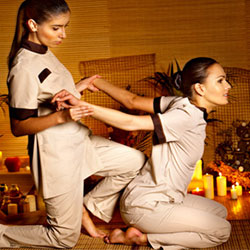
Breema®
Typical session length: 30-60 minutes
This type of bodywork—nurturing touch, guided stretching, supported postures, and rhythmic movements—originated in the small Kurdish village of Breemava. Breema® focuses on balancing energy in the mind and body.
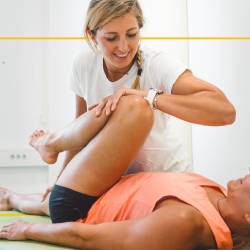
Fascia Stretching
Typical session length: 30-60 minutes
Fascia stretching is a type of massage that can increase a patient’s range of motion with very little or no pain. By manipulating fascia—the connective webbing around muscles and nerves—massage therapists can efficiently loosen muscle tension and increase mobility.
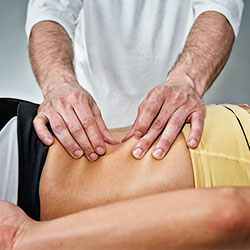
Myofascial Release Therapy
Typical session length: 45-90+ minutes
Myofascial release refers to a manual massage technique of gentle, specialized stretching that targets connective tissue layers with the goal of reducing pain and restoring mobility, and enhancing the body’s natural healing capabilities.
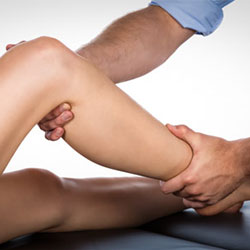
Neuromuscular Massage
Typical session length: 30-90 minutes
A neuromuscular massage is a specialized form of manual therapy that manipulates muscles, tendons, and connective tissue through specific massage techniques and utilizes flexibility stretching to reduce neuromuscular pain and restore balance to the central nervous system.
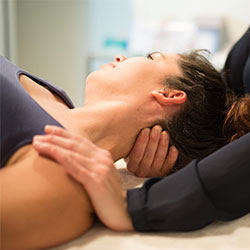
Ortho-Bionomy®
Typical session length: 60 minutes
Great for relieving muscle tension and stress, Ortho-Bionomy® is a comprehensive yet gentle and non-invasive form of bodywork based on principles of osteopathy (in which students learn how to move and position the body to help facilitate a patient’s comfort) promotes the body’s natural abilities to self-balance.
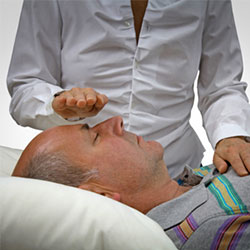
Polarity Therapy
Typical session length: 30-90 minutes
Polarity therapy, which combines bodywork, nutrition, exercise, and self-awareness, seeks to address energy blockages and imbalances in the mind, body, and spirit using gentle stretching and pressure-sensitive bodywork exercises.
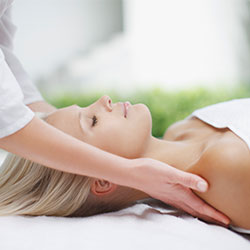
Trager® Therapy
Typical session length: 60-90 minutes
The Trager® approach to bodywork uses gentle rocking and rolling movements to promote flexibility and help release deep-seated physical and mental patterns that can block the body’s natural, free-flowing motion.
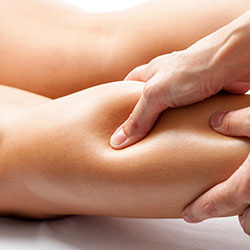
Trigger Point Massage
Typical session length: Varies
Trigger point massage practitioners apply firm pressure with a finger or an instrument for several seconds to tender muscle tissue in order to foster healing and reduce pain and stiffness; pressure is increased as the trigger point softens.
Cupping and stone
Our hands aren’t the only tools we can use in a massage. These modalities make use of additional materials to achieve specific somatic results.
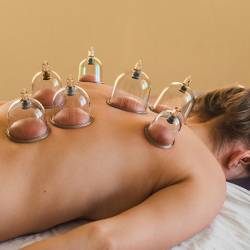
Cupping Therapy
Typical session length: 15-60 minutes
Some massage therapists specialize in cupping therapy for its health benefits. By placing cups that have been previously heated with fire on the client’s back, it allows for the manipulation of soft tissue and stimulates blood flow as a result of negative pressure.
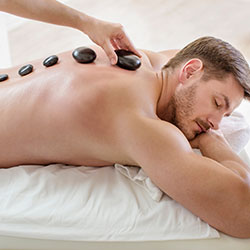
Stone Therapy
Typical session length: 30-90 minutes
Stone therapy uses hot (or sometimes cold) stones to work deeper into the muscles without the discomfort of regular deep tissue massage to improve circulation, reduce inflammation and relax the muscles.
Deep tissue
Massage therapists use deep tissue massage modalities to access and manipulate our deeper muscle layers.
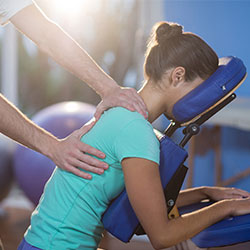
Chair Massage
Typical session length: 5-30 minutes
Chair massage, or seated massage, allows a client to sit comfortably and receive a neck, back, arm and shoulder massage while fully clothed. It can be done in airports, street fairs, shopping centers, or corporate office buildings.
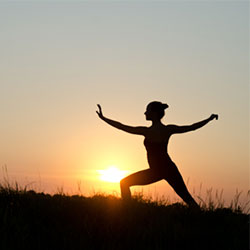
Hellerwork®
Typical session length: 90 minutes
Combining hands-on deep-tissue bodywork, movement education and empowering dialogue, Hellerwork® helps create new levels of physical and emotional awareness and help restore the body’s natural balance and alignment and relieve tension, pain and stress.
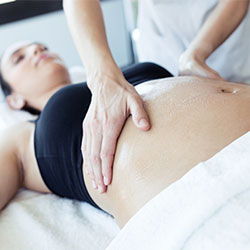
Prenatal Massage
Typical session length: 60-90 minutes
Prenatal massage uses techniques from deep-tissue massage, Swedish massage, Shiatsu massage, and others, using positioning recommended for pregnant women. It helps reduce pregnancy discomforts such as back pain, swelling and improves circulation and sleep.
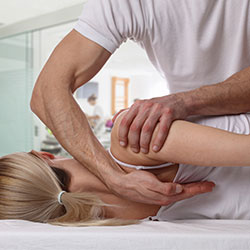
Rolfing®
Typical session length: 60-90 minutes
Through a series of gentle as well as deeper techniques in 10 distinct sessions, Rolfing® works to lengthen and reposition connective tissue, or fascia, to help realign the whole body and improve posture, flexibility, and energy levels.
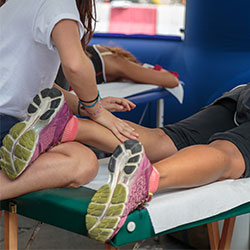
Sports Massage
Typical session length: Varies
Designed to support athletic performance and prevent injuries, sports massage employs a variety of modalities such as deep-tissue massage for soft tissue mobilization to stretching techniques to boost function in muscles and joints.
Eastern origins
Although many types of massage have Eastern roots, these modalities particularly hone in on their Eastern traditions and methods.
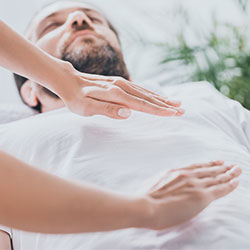
Reiki
Typical session length: 30-90+ minutes
A nearly 100-year-old Japanese healing practice, Reiki involves the placement of the hands in 10 to 20 specific positions on or near the body in order to channel and balance the flow of life force energy. Reiki is often combined with traditional massage therapy.
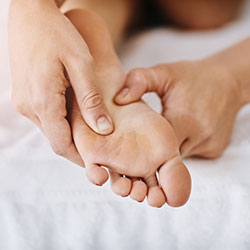
Reflexology
Typical session length: 30-60 minutes
Reflexology is a traditional form of Chinese massage that concentrates on applying pressure to certain points on the hands, feet, and ears to stimulate self-healing and is effective in reducing stress and relieving common health problems such as chronic pain, allergies and digestive issues.
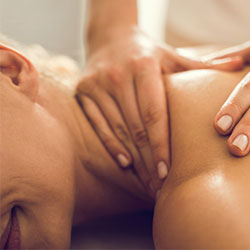
Tui Na Therapy
Typical session length: 30-60 minutes
One of the oldest forms of bodywork with roots in Chinese medicine, Tui Na massage is a cross between acupressure and Shiatsu. It promotes balance using rhythmic compression along energy channels of the body with manipulation techniques at acupressure points.
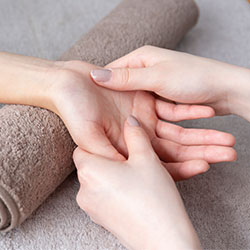
Shiatsu
Typical session length: 30-90 minutes
The art of Shiatsu is a form of Japanese massage in which a therapist uses fingers, thumbs, and palms to put pressure on specific points of the body to promote self-healing and relieve pain. This acupressure technique is thought to unblock energy flow networks in the body, which can encourage healing from a variety of ailments.
Energy
These massage techniques tap into our body’s natural energy flows to promote healing and balance. They combine touch with other practices such as breathing, talking or meditation.
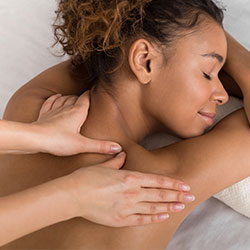
Healing Touch
Typical session length: 40-60 minutes
Healing touch therapy is about placing the hands lightly on or just above an individual, this technique is intended to change a client’s energy field and support physical, emotional and spiritual wellness.
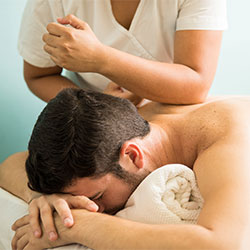
Lomi Lomi Massage
Typical session length: 45-90+ minutes
Lomi Lomi massage is rooted in the traditions of ancient healers of Hawaii, this form of massage—during which therapists use their forearms and hands to perform fluid, rhythmic motion over the client’s body (often described as a sensation of gentle waves)—emphasizes the free flow of energy throughout the body.
Medical
More and more physicians are recognizing the medical benefits of massage. These types of massage may be utilized in a medical setting.

Craniosacral Therapy
Typical session length: 30-90 minutes
Craniosacral Therapy is a manual therapy—especially popular for treating headaches and jaw problems such as TMJ—that uses light touch to gently manipulate the head and spine and support the body’s innate healing abilities.

Medical Massage
Typical session length: Varies
Employing a variety of therapeutic, corrective, and restorative modalities and procedures, medical massage is anatomically precise and specific to patients who are living with diseases, pain, and injuries.
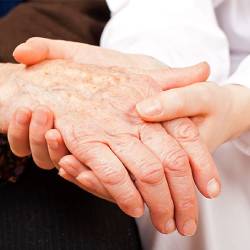
Palliative Massage
Typical session length: Varies
Many studies have indicated that massage in a palliative care setting can help reduce anxiety, pain, and depression near the end of life. Utilizing massage to reduce pain caused by cancer or other ailments can help improve one’s quality of life, especially for hospice patients.
Movement
Though you may associate massage therapy with lying on a table, there are many modalities that incorporate active movement into order to achieve certain positions.
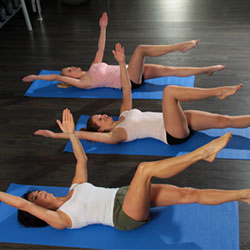
Feldenkrais® Training
Typical session length: 30-60 minutes
Developed by Russian-born physicist Dr. Moshé Feldenkrais®, this form of movement therapy, during which practitioners use gentle hand-on guidance to help people improve their flexibility, coordination and range of motion. The Feldenkrais® method is designed to help “re-wire” a client’s nervous system and let go of old patterns.
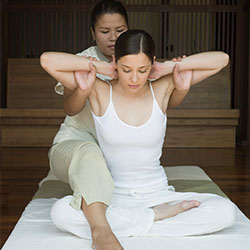
Thai Bodywork
Typical session length: 60-120 minutes
Thai bodywork massage is practiced on a mat on the floor instead of a table and combines stretching and body movements to loosen muscles and release tension. It often also integrates yoga, energy healing, acupressure, and meditation.
Parting Words
Once you’ve decided on the special path you most see yourself on, your next step is to find the right school. A few things to look for in a prospective massage school:
- how much it’s going to cost (naturally),
- whether it has an accreditation (though not a deal breaker),
- and lastly whether they offer online massage courses to keep up with continuing education requirements.
Finally, equipping yourself with the right massage profession resources such as popular industry journals, newsletters, and blogs will help you stay connected and informed should any new specialties sprout up.
Written and reported by:
Natural Healers Team
